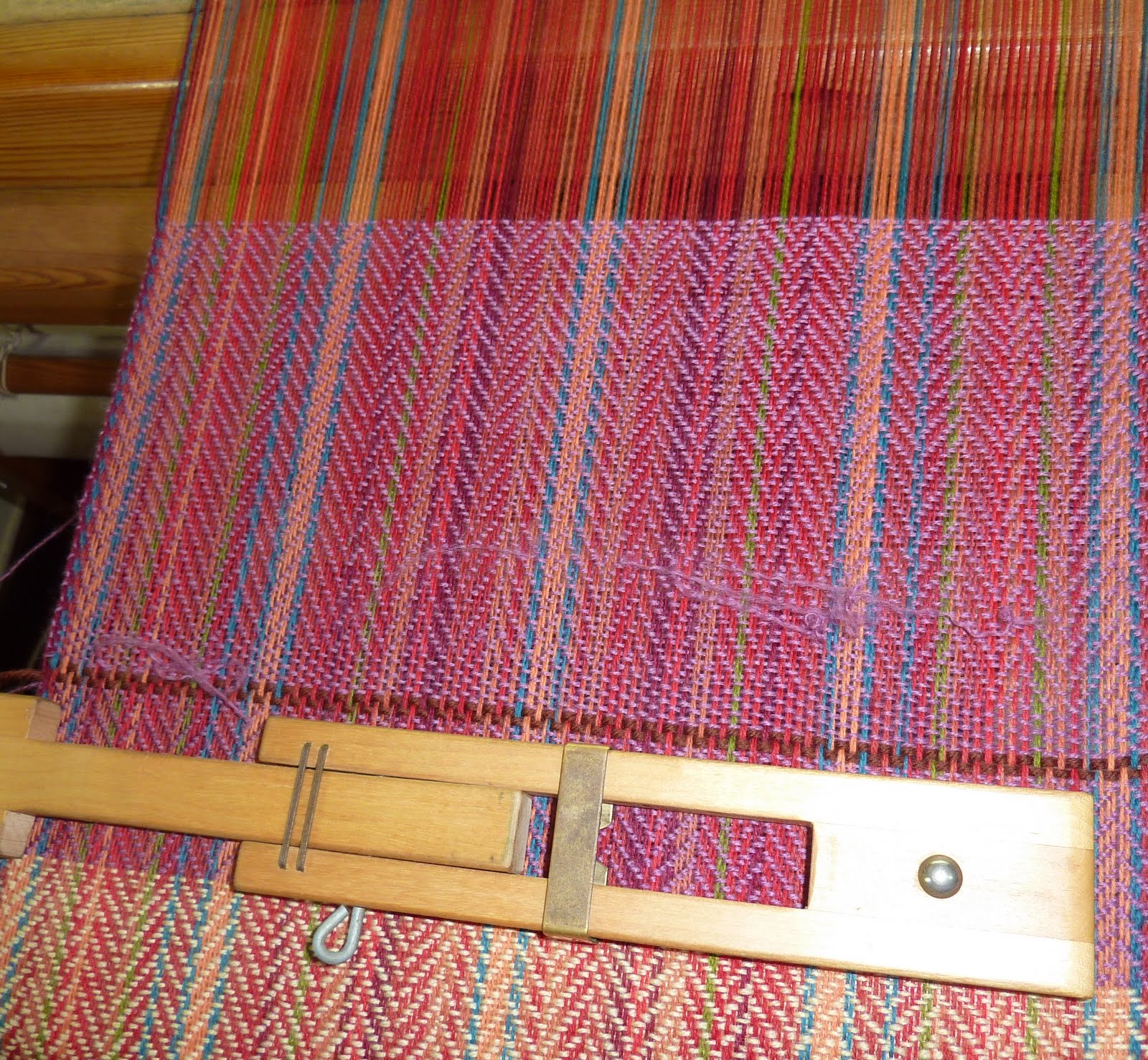In my last post "We are off" I was talking about a herringbone scarf that I am weaving on a 24 shaft draft. I am using this threading because that is what was on the loom and tied on the new warp. This is the draft;

The weaving software that I use is PixeLoom which has an "Optimise Draft". When applied to the draft I get this;
When I consider how I derived the tie up for the 20 shaft (discounting the selvedges) draft I shouldn't have been surprised. The tie-up is Four Thread Herringbone
(Marguerite P.D. p 25) with the threading straightened to 8 shafts and
this was then used to create a 20 shaft tie-up. Optimising the draft restores the original herringbone threading.
And as always when considering anything to do with 4 shafts it has almost invariably already been documented by Marguerite P. Davidson!
Basket Weave & Herringbone - MPD page 49
As long as the tie up is for a 2/2 twill and the treadling is straight this will work for any 4 shaft threading; just thread up a bit of basket weave on each side, using odd shafts on one side and even on the other.














